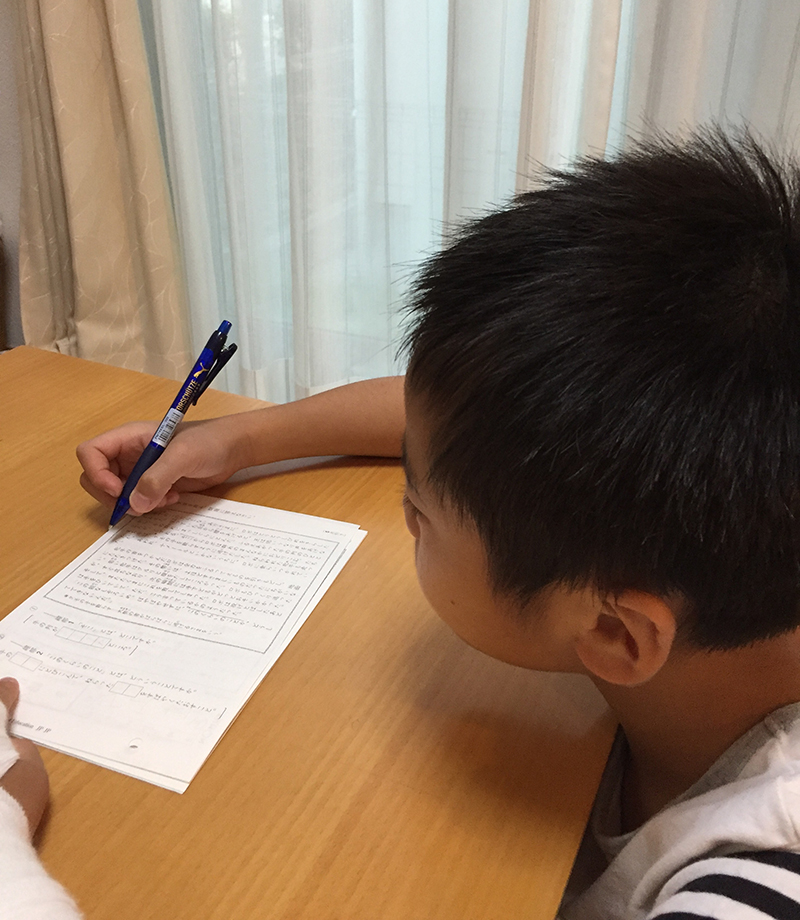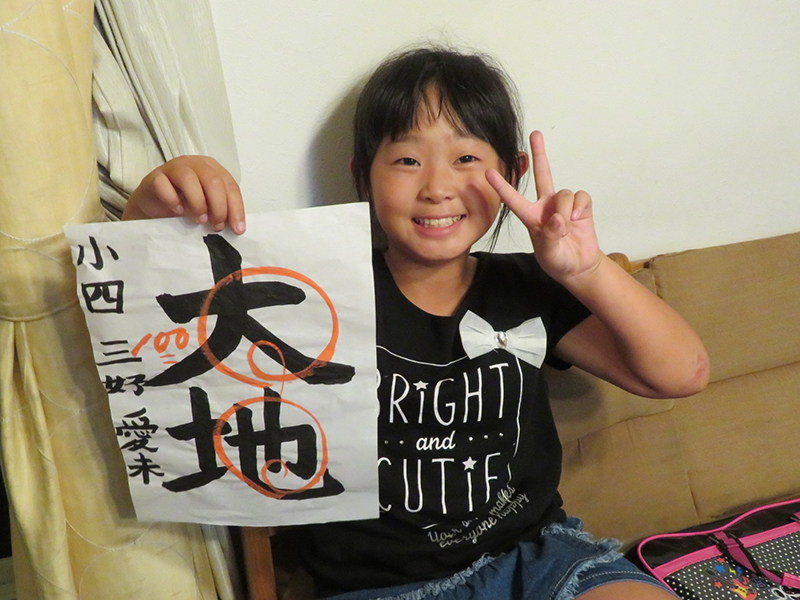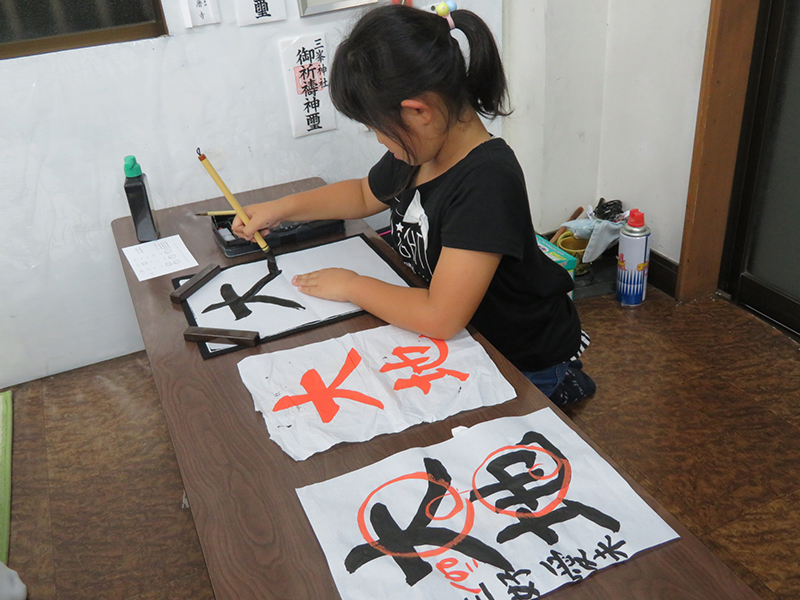Hello! I'm Ami Akutagawa from the CSR Group in the General Administration Department at PPC. I'm also a member of the P-Mates editorial team.
This time the editorial team decided to do an article for this column on the theme "Children's 'after school activities' in your countries" . I could talk to two mothers at PPC whose children take after-school lessons in typical Japanese subjects. So let me tell you what they said!
KUMON *
PPC General Administration Department: Sugane-san's son
* KUMON:A type of private school offering supplementary classes. Learning is promoted utilizing educational materials geared to individual children’s abilities and levels, not based on their age or school year. Kumon originated in Japan, but has spread to countries around the world. There might be Kumon schools in your country, too!
Son's age:9 yrs.
Frequency of attendance at Kumon:2 times a week
(Frequency of total after-school activities: 4 times including other lessons)
Comment by Sugane-san :
"I wanted my son to get in the habit of sitting at a desk studying before he entered elementary school, so I started him going to Kumon when he was 6 years old. There is the Kumon classroom that well-regarded by parents in my neighborhood because the teacher is very dedicated, so a lot of my son's friends go to Kumon, too.
A class of one subject lasts for about 30 minutes. In the class, at first students answer questions on the number of worksheets suited to the progress each has achieved, then the teacher checks their answers and corrects if there’s the wrong answers.
When my son runs up against difficult tasks, he says negative things like "I want to quit," and "Why do I have to do it?" But in the course of Kumon’s repetitive learning he switches to saying positive things like "It's fun," and "I'm good at that." He was commended for his progress in English. (At Kumon, children advance in learning at different speeds, but those who achieve a level that is 3 school grades above their actual school grade receive commendation.)
I'm glad I sent him to Kumon, because my original purpose of getting him in the habit of "studying constantly has been achieved. I think another benefit of Kumon is that parents can see the learning progress their children are making."
Japanese Calligraphy
PPC Quality Assurance Department: Miyachi-san’s daughter
Daughter's age:10 yrs.
Frequency of attendance at calligraphy class:Once a week
(Frequency of total after-school activities:4 times a week)
Comment by Miyachi-san:
"About 2 years ago, I had my daughter begin learning calligraphy so that she can write a better hand. Calligraphy class is popular and a lot of my daughter's friends at school also take the class.
One calligraphy lesson lasts about 1 hour. The students can learn calligraphy using both a hard pen and a brush. At the beginning of the class they get a sample drawn by the teacher which they try to imitate as closely as possible in drawing the letters themselves. After drawing several, they choose the one they think is the best and show it to the teacher. If corrections need to be made, the teacher checks those places in reddish orange ink or draws a big circle on the letters if they are drawn well.
My daughter received a gold award and a silver award at the hard pen contest at school. It seems that it's fun and pleasant for my daughter to receive awards like that, and she said "Because I take calligraphy lessons I can have confidence in my calligraphy class at school now." Recently she tells me that she wants the expensive brush on display in the classroom.
As a parent, I think it's good for children to spend time concentrating on something like calligraphy. Another good thing is that the classroom teacher gives children the opportunities to challenge by inviting them to take skill tests and participate in exhibitions. I hope my daughter continues to take up challenges and raise her calligraphy rank. But my daughter's handwriting is still poor, so I want her to write more neatly."
When the children start going to lessons, I think it must be hard for the parents because they always have to take and pick up the children, but the two mothers I talked to are thinking about what will be good for their children and that's why they have them take various kinds of lessons.
There are many types of lessons that vary depending on the country or region, but the love of parents who consider about the best for their children is the same in every country, that is the reason why they have their children take after-school lessons.
I hope Sugane-san's son and Miyachi-san's daughter continue to enjoy their lessons!
Written by Ms. Ami Akutagawa


